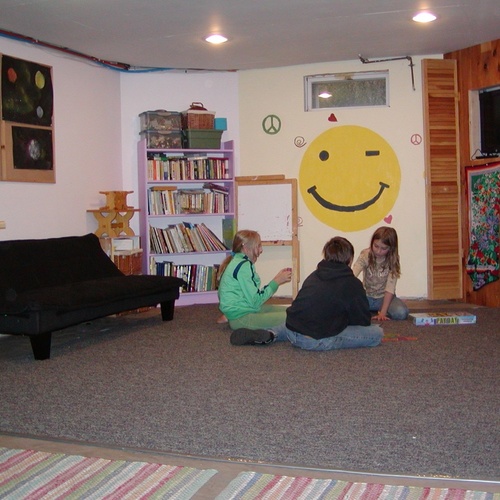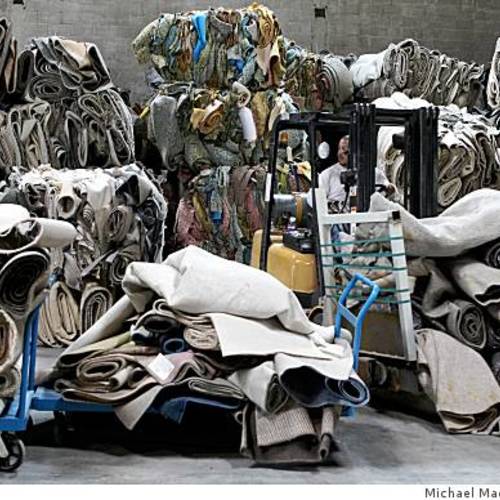
Image Credit: Peter Yost
In the green building community, carpeting has a bad reputation. While hardwood flooring is the honor student who sits in the front of the class, carpeting is the kid in the back row, shooting spitballs and ignoring the teacher.
Does carpeting deserve its bad reputation? Or has it been unfairly maligned?
The case against carpeting
I’ve assembled the seven most common reasons that are used by green building experts to argue against carpeting.
Carpeting absorbs water and can therefore harbor mold. Carpeting is hygroscopic, and once it gets wet, it stays wet for a long time. Since mold needs a damp environment to grow, it loves damp carpeting.
Carpeting harbors dust mites and pet dander. These substances don’t bother everyone, but they can trigger symptoms in people with allergies.
Carpeting lowers indoor air quality (IAQ). This association is vague, but one document explains that the reduction in IAQ is due to “mold spores, dust mites, dirt and other allergy-producing substances” as well as “the synthetic fibers in carpet.” For the record, there is no evidence that dirt causes allergies; in fact, there is considerable evidence that exposure to dirt lowers the chance of allergy development. Most Americans tolerate synthetic fibers, since these fibers are used to make clothing.
According to another source (Green From the Ground Up), carpeting can “off-gas” and collect “chemicals that are tracked in from outdoors.” The book doesn’t provide further details, but it makes sense to conclude that people who spread pesticides on their lawn will probably bring some pesticide residue indoors on the soles of their shoes.
Carpeting is associated with sick building syndrome. The causes of sick building syndrome are in dispute, but some studies have shown a correlation between…
Weekly Newsletter
Get building science and energy efficiency advice, plus special offers, in your inbox.

This article is only available to GBA Prime Members
Sign up for a free trial and get instant access to this article as well as GBA’s complete library of premium articles and construction details.
Start Free TrialAlready a member? Log in















3 Comments
Green carpeting
Keeping carpet clean is the biggest negative. It needs frequent vacuuming. Dirt, pollen, and other contaminants provide a food source for mites, fleas, and other small life forms. The higher the pile, the more difficult the cleaning. The padding that typically comes with carpet installation is potential source of VOCs, even though it may include recycled content. Because nylon carpet is so resilient, it should be clearly identified as being recyclable. Interface was first in producing such a product, but others have followed suit. Ideally, you don't want to "own" the carpet, but use it.
Wool vs. Synthetics
Although I do think emitted chemicals and VOCs is a reasonable concern for synthetic carpeting, I think the clearest benefits of wool over nylon is more a matter of the inherent properties of wool. It apparently has a proven ability to absorb and desorb moisture, and to permanently chemically bind and (eventually) render inert common harmful building chemicals like formaldehyde, nitrogen oxides, and sulfur dioxides. These benefits are in addition to the more obvious advantages regarding lower impact life-cycle compared to fossil fuel manufactured products (lower embodied energy, greater recyclability, and even biodegradability).
Aside from the abstract from the Journal of Materials Science, the links below are mostly referring to wool as an insulation, but I don't see why properties would differ for wool carpeting.
No doubt wool is much more expensive, and plenty more research should be done, but there is definitely justification for advising to use wool over nylon.
https://link.springer.com/article/10.1007/s10853-011-6163-7
http://www.blackmountaininsulation.com/Passive_Solutions_to_Indoor_Air_Quality.pdf
https://www.havelockwool.com/why-wool-insulation-works
Lee Laney
Home Energy Advisor, Community Energy Challenge
Also, wood floors are not commonly made by child labor
So if you decide to get a hand knotted wool rug, make sure it's certified free of child labor (https://goodweave.org/).
Log in or become a member to post a comment.
Sign up Log in